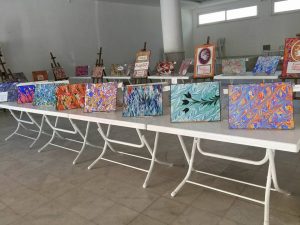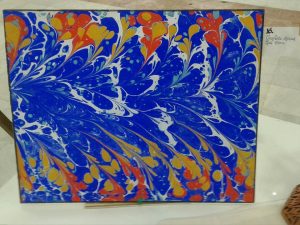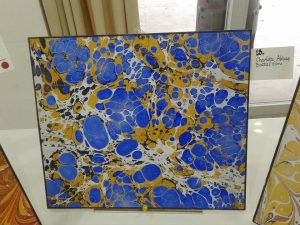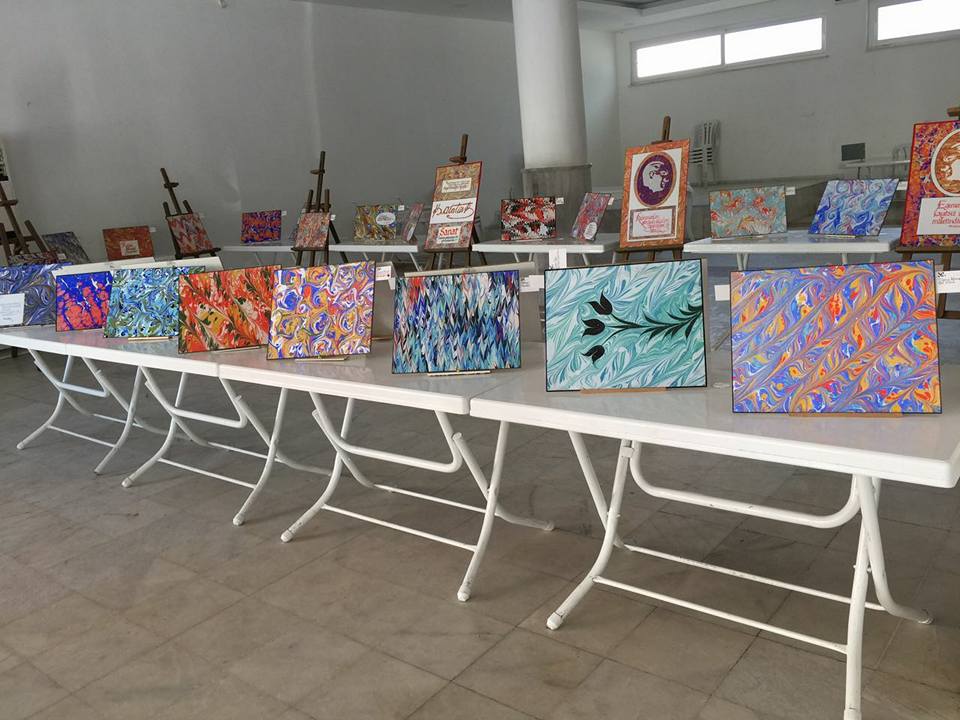EXPATS and Turks who have learnt the ancient art of Ebru – or marbling – were over the moon to show their art to the public last weekend.
The exhibition, at Didim’s wedding salon, was the conclusion of three months work by a mixed group of residents, under the tutorship of artist Turgut Gulten.

Participants of the exhibition
Paper marbling is a method of aqueous surface design, which can produce patterns similar to smooth marble or other kinds of stone.
Expat Charlotte Akbas, who participated in the exhibition, commented: “Well today I fulfilled one of my dreams: to be part of an art exhibition. I have learnt one of the most beautiful art forms – a water dance which is magnificent to behold.
 “I’m truly grateful to Turgut for spending his time teaching skills to create such beauty. I have also met some fabulous people who have become true friends.”
“I’m truly grateful to Turgut for spending his time teaching skills to create such beauty. I have also met some fabulous people who have become true friends.”
 The patterns are the result of colour floated on either plain water or a viscous solution known as size, and then carefully transferred to an absorbent surface, such as paper or fabric.
The patterns are the result of colour floated on either plain water or a viscous solution known as size, and then carefully transferred to an absorbent surface, such as paper or fabric.
Through several centuries, people have applied marbled materials to a variety of surfaces. It is often employed as a writing surface for calligraphy, and especially book covers and endpapers in bookbinding and stationery. Part of its appeal is that each print is a unique monotype.
 Ebru is a method of marbling more familiar to Europeans and Americans, made on the surface of a viscous mucilage, known as size or sizing in English.
Ebru is a method of marbling more familiar to Europeans and Americans, made on the surface of a viscous mucilage, known as size or sizing in English.
This method is commonly referred to as “Turkish” marbling and is called ebru in Turkish. The term “Turkish” was most likely used as a reference to the fact that many Europeans first encountered the art in Istanbul.
